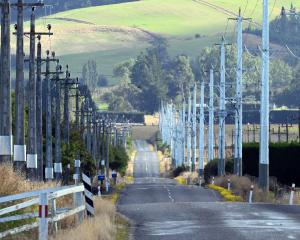The news is bad and it's coming in fast.
Turn tens of thousands of scientists loose on a problem for two decades and the results will seem pathetic for the first few years, because it takes time to gather the data - even to build the equipment with which you gather the data.
But slowly the flow of data will grow and, at the end of 20 years, you can expect major new insights every month or so.
That is where we are now with climate change.
September's unwelcome news, from the Hadley Centre for Climate Prediction and Research in Britain, was that if fossil fuel use continued on the present trend line, the planet would be an average of 4degC warmer by the 2060s.
This contrasts with the prediction of the Intergovernmental Panel on Climate Change, published in 2007, that we might see 4degC, at the most, by 2100.
This month's bad news came from the drilling ship, JOIDES Resolution (Joint Oceanographic Institutions for Deep Earth Sampling), which brought up cores from the ocean bottom containing sediments dating back 20 million years.
The news was that when the carbon dioxide in the atmosphere was last at 450 parts per million, the average global temperature was 3degC-6degC hotter than now, and the sea level was 25m-40m higher.
That is bad news because 450 parts per million is where we are hoping to halt the rise in CO2 in the atmosphere this time around. (We are now at 390ppm.) All the world's major governments have agreed in principle the warming must never be allowed to exceed 2degC, because beyond that we risk runaway warming.
It was thought that 450ppm would let us stop at that point.
Not so, it would appear, or at least not for long.
The leader of the JOIDES research team, Aradhna Tripati, of the University of California at Los Angeles, put it bluntly: "What we have shown is that in the last period when CO2 levels were sustained at levels close to where they are today, there was no ice cap on Antarctica and sea levels were 25m-40m higher."
Suspicions that the 450ppm target is much too high have been growing for some time.
Late in 2007, James Hansen, the director of Nasa's Goddard Institute for Space Studies in New York, made a public appeal at a meeting of the American Geophysical Union to move to a 350ppm target.
Dr Hansen's study of ancient climates had led him to the conclusion the first time permanent ice appeared on the planet, after a complete absence for tens of millions of years, was when the amount of carbon dioxide fell to 425ppm some 35 million years ago.
His calculations had a possible error of plus or minus 75ppm, so for safety's sake he settled on 350ppm as the long-term target for human stewardship of the atmosphere.
Did that word "stewardship" throw you? Many people instinctively recoil from any direct human intervention in the atmosphere, on the grounds we don't know enough to get it right.
But when we have already been changing the atmosphere unintentionally for two centuries, since the start of the industrial revolution, it's a bit late for such qualms.
We have already destabilised it and only we can reverse the changes we have caused.
Dr Hansen even thought 350ppm might still be too high, because the normal level of CO2 during the 10,000 years of human civilisation, before we began burning fossil fuels, was only 280ppm.
Now JOIDES has given us a more accurate measure of ancient climate, from closer to the present.
By 20 million years ago, almost all the ice on the planet had been lost again, due to a prolonged period of volcanic activity in the Columbia River basin of North America.
The carbon dioxide emitted by that activity had raised the average global temperature to 3degC-6degC above the current level and all the melted ice had raised the seal level by 25m-40m.
But the actual level of CO2 that caused all that was only 400ppm.
We will be there in five years, but we must not stay there for very long or history will repeat itself.
In reality, we are going to go to at least 450ppm, and more likely 500ppm, before we get our emissions under control, and then we will have to begin the long and arduous task of getting the CO2 in the atmosphere down to a level that will preserve our present climate over the long term.
That may have to be as low as 300ppm.
And all through that time, we must prevent the warming from exceeding 2degC, which means that a resort to various methods of geo-engineering to keep the heat down is almost unavoidable.
That is what these numbers are telling us and we would be wise to listen.
Gwynne Dyer's latest book, Climate Wars, was published recently in New Zealand by Scribe.











